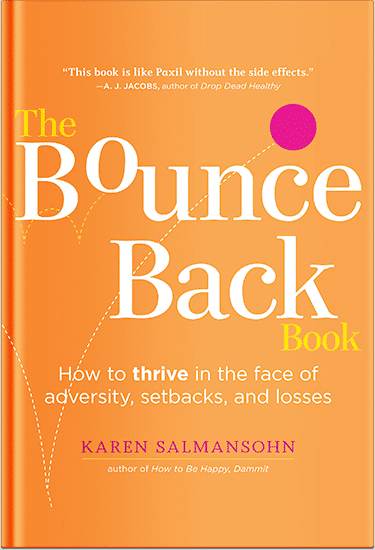 Adolescence is a turbulent time filled with growth, self-discovery, and challenges. Unfortunately, for many teens, this period also includes experimentation with drugs or alcohol… sometimes leading to substance use disorder. As a parent, teacher, or concerned friend, you might wonder how to spot the warning signs, understand the risk factors, and offer meaningful help.
Adolescence is a turbulent time filled with growth, self-discovery, and challenges. Unfortunately, for many teens, this period also includes experimentation with drugs or alcohol… sometimes leading to substance use disorder. As a parent, teacher, or concerned friend, you might wonder how to spot the warning signs, understand the risk factors, and offer meaningful help.
This post will break it all down in a clear, actionable way. You’ll learn how to recognize red flags, why early illicit drug intervention matters, and what steps you can take to support a struggling teen. Read on.
Why Adolescent Substance Abuse is a Serious Concern
Teens aren’t just ‘being reckless’—their brains are still developing which makes them more vulnerable to addiction and other risky behaviors. Substance use disorder during these formative years can derail their mental health, academic success, and future relationships.
The earlier a teen starts using illicit substances, the higher their risk of long-term dependency.
That’s why early intervention for substance abuse is crucial. Ignoring the problem won’t make it go away—it often makes things worse.
Why Teens Turn to Substances
Understanding the ‘why’ helps you address the root cause of drug abuse among adolescents. Common reasons include peer pressure (fitting in can feel more important than saying no), stress and trauma (bullying, familial discord, and so on can be some of the reasons behind adolescent substance use), curiosity, and so on.
Knowing these triggers helps you approach the situation with empathy—not just frustration.
Common Signs of Substance Abuse in Teens
You might notice changes in behavior, mood, or appearance. While some shifts are normal during adolescence, certain red flags concerning illicit drug use shouldn’t be ignored.
Physical signs of illicit drug addiction include the following: bloodshot eyes or dilated pupils, drastic weight loss or gain, poor hygiene or unusual smells, and so on.
On the other hand, the behavioral changes you should look out are these: if your loved one skipping school, losing interest in hobbies or friendships, or secretive behavior.
Finally, adolescents with substance use issues tend to experience the following emotional shifts:
- Extreme mood swings;
- Increased anxiety or paranoia;
- Apathy or lack of motivation; and the like.
If you spot several of these signs, don’t panic—but don’t ignore them, either. The next step is understanding the risks.
The Real Risk Factors of Illicit Drug Abuse on Teens
Experimenting with drugs or alcohol might seem like a phase, but the consequences can be life-altering. Here’s what’s at stake:
1. Brain Development Harm
Per health care professionals, the human brain isn’t fully developed until the mid-20s. Substance use disrupts critical growth in areas controlling judgment, impulse control, and memory. This can lead to poor decision-making and learning difficulties for adolescents with substance use issues.
2. Higher Risk of Addiction
Teens’ brains are more sensitive to dopamine, the ‘feel-good’ chemical. This makes them more likely to crave substances and develop addiction faster than adults.
3. Mental Health Complications
Substance abuse is said to worsen anxiety, depression, and other mental disorders associated with using drugs of abuse. Luckily, adolescent psychiatrists can lend a hand when dealing with co-occurring disorders.
4. Dangerous Behavior
Impaired judgment leads to risky choices among adolescent populations—drunk driving, unprotected sex, or mixing substances with deadly results.
5. Long-Term Life Consequences
Addiction can derail school seniors education, career prospects, and relationships. Early substance abuse is linked to financial instability, legal trouble, and chronic health issues down the road.
How to Talk to a Teen About Substance Abuse
 If you suspect a problem, confrontation won’t help. Instead, try these steps:
If you suspect a problem, confrontation won’t help. Instead, try these steps:
- Pick the right time and place. Pick a calm, private moment to talk.
- Next, express genuine concern instead of anger.
- Then, listen more than you lecture. Let your teen share their side. They might open up about stress or peer pressure.
- Offer support; don’t impose any ultimatums. Resorting to the latter would do more harm than good.
- Finally, provide facts and not scare tactics. Share real stories of how addiction starts subtly but escalates.
Remember: being methodical while staying empathetic is key to striking a meaningful talk to initiate the next step – getting the proper intervention for youth substance use.
Getting Professional Help
If the problem is beyond your control, don’t hesitate to seek expert assistance. Here’s how:
1. Consult a Doctor or Counselor
A professional can assess whether the teen needs therapy, rehab, or medical intervention. They’ll carry out substance use screening, prospective study of the case, and many more.
2. Explore Treatment Options
Depending on the case, the following are medical treatments or intervention for youth members dealing with substance abuse: therapy, motivational interviewing, support groups, and so on.
3. Involve the School
Teachers and counselors can provide additional support and monitoring aside from the prescribed treatment for adolescents.
4. Create a Supportive Home Environment
Remove temptations, set clear boundaries, and encourage healthy coping mechanisms like exercise, hobbies, and mindfulness.
Preventing Substance Abuse Before It Starts
Prevention is always better than intervention.
- Encourage open communication. It’s said that teens who feel heard are less likely to seek escape in substances.
- Educate early; don’t wait until high school to discuss drugs and alcohol.
- Encourage healthy friendships. Help your teen to find positive peer groups.
- Be a role model. Your relationship with substances influences theirs.
Those are just some top examples that you can easily follow to prevent your teen from falling into the harmful pit of drug abuse.
You Can Make a Difference
Adolescent substance abuse is scary, but it’s not hopeless. The sooner you act, the better the outcome. Stay observant, approach with compassion, and don’t be afraid to seek help.
Your support could be the lifeline a teen needs to turn things around. If you suspect a problem, start the conversation today—it might just save a life.
P.S. Before you zip off to your next Internet pit stop, check out these 2 game changers below - that could dramatically upscale your life.
1. Check Out My Book On Enjoying A Well-Lived Life: It’s called "Your To Die For Life: How to Maximize Joy and Minimize Regret Before Your Time Runs Out." Think of it as your life’s manual to cranking up the volume on joy, meaning, and connection. Learn more here.
2. Life Review Therapy - What if you could get a clear picture of where you are versus where you want to be, and find out exactly why you’re not there yet? That’s what Life Review Therapy is all about.. If you’re serious about transforming your life, let’s talk. Learn more HERE.
Think happier. Think calmer.
Think about subscribing for free weekly tools here.
No SPAM, ever! Read the Privacy Policy for more information.
One last step!
Please go to your inbox and click the confirmation link we just emailed you so you can start to get your free weekly NotSalmon Happiness Tools! Plus, you’ll immediately receive a chunklette of Karen’s bestselling Bounce Back Book!


 Adolescence is a turbulent time filled with growth, self-discovery, and challenges. Unfortunately, for many teens, this period also includes experimentation with drugs or alcohol… sometimes leading to substance use disorder. As a parent, teacher, or concerned friend, you might wonder how to spot the warning signs, understand the risk factors, and offer
Adolescence is a turbulent time filled with growth, self-discovery, and challenges. Unfortunately, for many teens, this period also includes experimentation with drugs or alcohol… sometimes leading to substance use disorder. As a parent, teacher, or concerned friend, you might wonder how to spot the warning signs, understand the risk factors, and offer  If you suspect a problem, confrontation won’t help. Instead, try these steps:
If you suspect a problem, confrontation won’t help. Instead, try these steps: